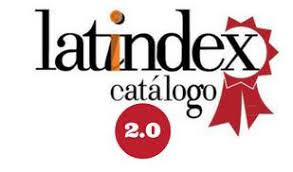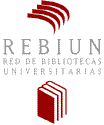Intervenciones ecológicas para mejorar el confort térmico en un patio escolar en Arequipa, Perú
DOI:
https://doi.org/10.22320/07190700.2025.15.01.07Palabras clave:
confort térmico, ENVI- met, patio, microclimaResumen
Los patios escolares se han convertido en espacios residuales carentes de confort térmico debido al incremento de la edificación para cubrir la sobrepoblación estudiantil. Por ello, se simularon estrategias arquitectónicas ecológicas para demostrar su eficacia en el mejoramiento del confort térmico en Arequipa, Perú; a partir del análisis de la temperatura fisiológica estándar de niños. Se adoptó un enfoque mixto, que combinó el software Sun Path para el análisis de asoleamiento, en base al Protocolo SOPARC y mediciones in situ, con Rayman para la simulación de confort térmico y Revit y ENVI-met para comprobar las estrategias aplicadas. Los resultados evidencian la mejora de la sensación térmica, siendo notable, aquella intervención en la que se efectuó el cambio de pavimento de tierra a césped, adición de vegetación arbórea e implementación de un invernadero ecológico. Por lo que, está investigación valida la optimización de las condiciones térmicas mediante un análisis previo y una posterior intervención mediante simulación.
Descargas
Citas
ABDALLAH, A. S. H., (2022). Passive design strategies to improve student thermal comfort in Assiut University: A field study in the Faculty of Physical Education in hot season. Sustainable Cities and Society, 86, 104110. https://doi.org/10.1016/j.scs.2022.104110 DOI: https://doi.org/10.1016/j.scs.2022.104110
AKOUMIANAKI-IOANNIDOU, A., PARASKEVOPOULOU, A. T., y TACHOU, V. (2016). School grounds as a resource of green space to increase child-plant contact. Urban Forestry & Urban Greening, 20, 375–386. https://doi.org/10.1016/j.ufug.2016.10.009 DOI: https://doi.org/10.1016/j.ufug.2016.10.009
BATES, C. R., BOHNERT, A. M., y GERSTEIN, D. E. (2018). Green Schoolyards in Low-Income Urban Neighborhoods: Natural Spaces for Positive Youth Development Outcomes. Frontiers in Psychology, 9, 805. https://doi.org/10.3389/fpsyg.2018.00805 DOI: https://doi.org/10.3389/fpsyg.2018.00805
BERNARDES, M., y VERGARA, L. G. L. (2017). Aprendiendo entre la naturaleza: Una revisión de los beneficios de los espacios verdes en el ambiente escolar. Arquitecturas del Sur, 35(52), 96–103. https://doi.org/10.22320/07196466.2017.35.052.09 DOI: https://doi.org/10.22320/07196466.2017.35.052.09
BINABID, J., ALYMANI, A., y ALAMMAR, A. (2024). Optimizing Outdoor Thermal Comfort for Educational Buildings: Case Study in the City of Riyadh. Buildings, 14(11), 3568. https://doi.org/10.3390/buildings14113568 DOI: https://doi.org/10.3390/buildings14113568
CIBSE. (s.f.). Guide A: Environmental Design. Chartered Institution of Building Services Engineers, de https://ierga.com/wp-content/uploads/sites/2/2017/10/CIBSE-Guide-A-Environmental-design.pdf
DENG, J. Y., y WONG, N. H. (2020). Impact of urban canyon geometries on outdoor thermal comfort in central business districts. Sustainable Cities and Society, 53, 101966. https://doi.org/10.1016/J.SCS.2019.101966 DOI: https://doi.org/10.1016/j.scs.2019.101966
DUARTE-TAGLES, H., SALINAS-RODRÍGUEZ, A., IDROVO, Á. J., BÚRQUEZ, A., y CORRAL-VERDUGO, V. (2015). Biodiversidad y síntomas depresivos en adultos mexicanos: exploración de los efectos benéficos del ambiente. Biomédica, 35(2), 46–57. https://doi.org/10.7705/BIOMEDICA.V35I0.2433 DOI: https://doi.org/10.7705/biomedica.v35i0.2433
GUO, W., JIANG, L., CHENG, B., YAO, Y., WANG, C., KOU, Y., XU, S., y XIAN, D. (2022). A study of subtropical park thermal comfort and its influential factors during summer. Journal of Thermal Biology, 109, 103304. https://doi.org/10.1016/J.JTHERBIO.2022.103304 DOI: https://doi.org/10.1016/j.jtherbio.2022.103304
Instituto Nacional de Estadística e Informática. (2022). Compendio Estadístico: Arequipa 2022. https://www.gob.pe/institucion/inei/informes-publicaciones/4132137-compendio-estadistico-arequipa-2022
JANSSON, M., ABDULAH, M., y ERIKSSON, A. (2018). Secondary school students’ perspectives and use of three school grounds of varying size, content and design. Urban Forestry & Urban Greening, 30, 115–123. https://doi.org/10.1016/j.ufug.2018.01.015 DOI: https://doi.org/10.1016/j.ufug.2018.01.015
Basurama (2024). La aventura de aprender. Cómo intervenir un patio escolar. Instituto Nacional de Tecnologías Educativas y de Formación del Profesorado (INTEF). https://www.libreria.educacion.gob.es/libro/la-aventura-de-aprender-como-intervenir-un-patio-escolar_184810
LANZA, K., ALCAZAR, M., HOELSCHER, D. M., y KOHL, H. W. (2021). Effects of trees, gardens, and nature trails on heat index and child health: design and methods of the Green Schoolyards Project. BMC Public Health, 21, 98. https://doi.org/10.1186/s12889-020-10128-2 DOI: https://doi.org/10.1186/s12889-020-10128-2
LAVILLA CERDÁN, L. (2013). La observación sistemática. Revista de Claseshistoria, (6), 374. http://www.claseshistoria.com/revista/2013/articulos/lavilla-observacion-sistematica.pdf
LINDEMANN-MATTHIES, P., y KÖHLER, K. (2019). Naturalized versus traditional school grounds: Which elements do students prefer and why? Urban Forestry & Urban Greening, 46, 126475. https://doi.org/10.1016/j.ufug.2019.126475 DOI: https://doi.org/10.1016/j.ufug.2019.126475
MAHMOUD, R. M. A., y ABDALLAH, A. S. H. (2022). Assessment of outdoor shading strategies to improve outdoor thermal comfort in school courtyards in hot and arid climates. Sustainable Cities and Society, 86, 104147. https://doi.org/10.1016/j.scs.2022.104147 DOI: https://doi.org/10.1016/j.scs.2022.104147
MARCHANTE GONZÁLEZ, G., y GONZÁLEZ SANTOS, A. I. (2020). Evaluación del confort y disconfort térmico. Ingeniería Electrónica, Automática y Comunicaciones, 41(3), 21-40. http://scielo.sld.cu/scielo.php?script=sci_arttext&pid=S1815-59282020000300021#B19
Meteo Consult. (25 de septiembre 2024). Previsiones meteorológicas y clima. https://www.meteoconsult.fr/
Ministerio de Salud. (2015). Guía técnica para la valoración nutricional antropométrica de la persona adolescente. Instituto Nacional de Salud. https://cdn.www.gob.pe/uploads/document/file/390257/guia-tecnica-para-la-valoracion-nutricional-antropometrica-de-la-persona-adolescente.pdf?v=1571242432
MORAKINYO, T. E., LAU, K. K.-L., REN, C., y NG, E. (2018). Performance of Hong Kong’s common trees species for outdoor temperature regulation, thermal comfort and energy saving. Building and Environment, 137, 157–170. https://doi.org/10.1016/J.BUILDENV.2018.04.012 DOI: https://doi.org/10.1016/j.buildenv.2018.04.012
NAMAZI, Y., CHARLESWORTH, S., MONTAZAMI, A. y TALEGHANI, M. (2024). The impact of local microclimates and Urban Greening Factor on schools’ thermal conditions during summer: A study in Coventry, UK. Building and Environment. 262, 111793. https://doi.org/10.1016/j.buildenv.2024.111793 DOI: https://doi.org/10.1016/j.buildenv.2024.111793
OREGI, X., GOTI, A., PÉREZ-ACEBO, H., ALVAREZ, I., EGUIA, M.I. y ALBERDI, E. (2024). Development of a Transdisciplinary Research-Based Framework for the Improvement of Thermal Comfort of Schools Through the Analysis of Shading System. Buildings, 15(1), 47. https://doi.org/10.3390/buildings15010047 DOI: https://doi.org/10.3390/buildings15010047
PASEK, M., SZARK-ECKARDT, M., WILK, B., ZUZDA, J., ŻUKOWSKA, H., OPANOWSKA, M., KUSKA, M., DRÓŻDŻ, R., KUŚMIERCZYK, M., SAKŁAK, W., y KUPCEWICZ, E. (2020). Physical Fitness as Part of the Health and Well-Being of Students Participating in Physical Education Lessons Indoors and Outdoors. International Journal of Environmental Research and Public Health, 17(1), 309. https://doi.org/10.3390/ijerph17010309 DOI: https://doi.org/10.3390/ijerph17010309
ROYÉ, D., MARTÍ EZPELETA, A., y CABALAR FUENTES, M. (2012). Aproximación al comportamiento espacial del estrés térmico en Galicia mediante el uso del índice bioclimático PET. https://aeclim.org/wp-content/uploads/2016/02/0092_PU-SA-VIII-2012-D_ROYE.pdf
SALAMEH, M. (2024). Modifying School Courtyard Design to Optimize Thermal Conditions and Energy Consumption in a Hot Arid Climate. Journal of Architectural Engineering, 30(4). https://doi.org/10.1061/jaeied.aeeng-1813 DOI: https://doi.org/10.1061/JAEIED.AEENG-1813
The Weather Channel. (25 de septiembre de 2024.). Weather forecast and climate information. https://weather.com/
Tiempo3. (25 de septiembre de 2024). El clima en Arequipa, Perú. https://www.tiempo3.com/south-america/peru/tacna/arequipa
TuTiempo.net. (25 de septiembre de 2024). El Tiempo: Pronóstico del tiempo para tu ciudad. https://www.tutiempo.net
Windy.com. (25 de septiembre de 2024). Wind map & weather forecast. https://www.windy.com/
Descargas
Publicado
Cómo citar
Número
Sección
Licencia
Derechos de autor 2025 Katherin Geraldine Vilcanqui-Coaquira, Patricia Delgado-Meneses, Valkiria Raquel Ibárcena-Ibárcena

Esta obra está bajo una licencia internacional Creative Commons Atribución-CompartirIgual 4.0.
El contenido de los artículos que se publican en cada número de Hábitat Sustentable, es responsabilidad exclusiva de los autores y no representan necesariamente el pensamiento ni comprometen la opinión de la Universidad del Bío-Bío.
Los autores/as conservarán sus derechos de autor y garantizarán a la revista el derecho de primera publicación de su obra, el cuál estará simultáneamente sujeto a la Licencia de Reconocimiento de Creative Commons CC BY-SA que permite a otros compartir-copiar, transformar o crear nuevo material a partir de esta obra con fines no comerciales, siempre y cuando se reconozcan la autoría y la primera publicación en esta revista, y sus nuevas creaciones estén bajo una licencia con los mismos términos.

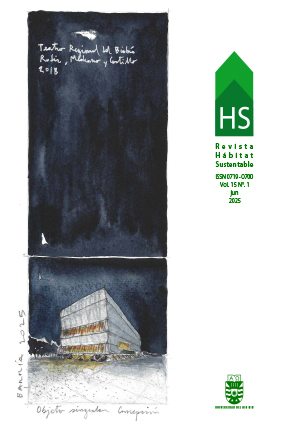
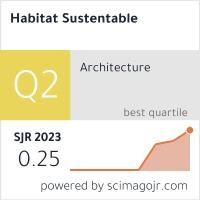








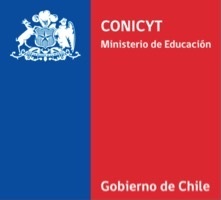 Programa de Información Científica/Concurso Fondos de Publicación de Revistas Científicas 2018/ Proyecto Mejoramiento de Visibilidad de Revistas UBB (Código:FP180007)
Programa de Información Científica/Concurso Fondos de Publicación de Revistas Científicas 2018/ Proyecto Mejoramiento de Visibilidad de Revistas UBB (Código:FP180007) 
